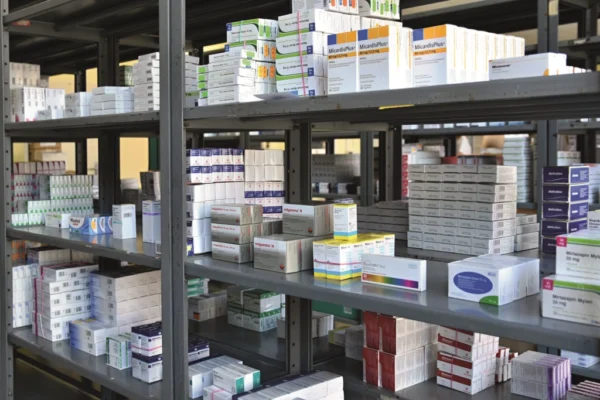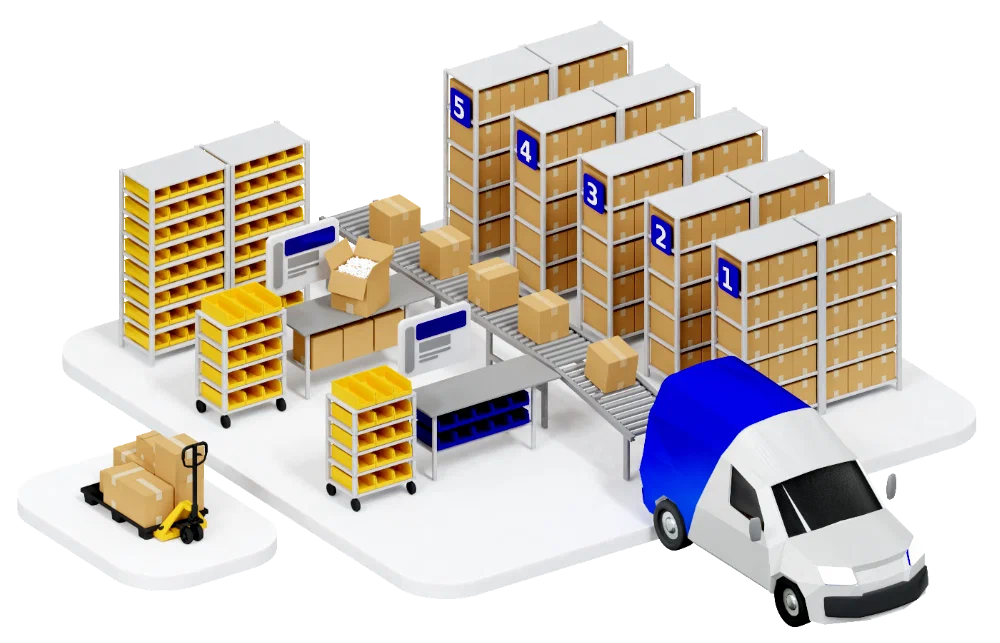The warehousing of drugs and pharmaceuticals is not merely about storing medications, it’s a sophisticated process that guarantees the safety, efficacy, and timely delivery of essential health products. In Riyadh, this process involves navigating a complex landscape of regulatory requirements, technological advancements, and logistical challenges. The city’s strategic location and expanding healthcare infrastructure make it a pivotal point for distributing pharmaceuticals across Saudi Arabia and beyond.
This comprehensive guide delves into the multifaceted world of the warehousing of drugs and pharmaceuticals in Riyadh. We will explore the critical components of warehousing practices, the latest industry trends, and the impact of regulatory frameworks. By understanding the nuances of this essential sector, we aim to provide valuable insights into how Riyadh is positioning itself at the forefront of pharmaceutical logistics and how these practices are shaping the future of healthcare delivery.
What is Pharmaceutical Warehousing?
Pharmaceutical warehousing refers to the systematic process of storing, managing, and distributing pharmaceutical products. This includes the warehousing of drugs and pharmaceuticals, where careful handling, temperature control, security, and timely delivery are essential. Facilities must adhere to rigorous regulatory standards to maintain the integrity and efficacy of the products.

These specialized warehouses are designed specifically for pharmaceutical warehousing, including medications and vaccines. They operate under controlled environments with precise temperature and humidity levels to ensure the safety and effectiveness of the stored items.
Pharmaceutical warehousing employs advanced inventory management systems and adheres to Good Distribution Practices (GDP) to track, manage, and distribute pharmaceuticals efficiently and accurately. The efficiency and promptness of deliveries from these warehouses are crucial for maintaining the integrity of the supply chain and ensuring that medications reach healthcare providers and patients in optimal condition.
Key Factors Influencing Warehousing of Drugs and Pharmaceuticals
Pharmaceutical warehousing solutions are shaped by several critical factors, including regulatory compliance, temperature management, and standard operating procedures (SOPs). Proper storage of pharmaceutical products in controlled environments is essential to maintain their effectiveness, requiring meticulous control of temperature and humidity levels.
Let’s explore two fundamental warehousing practices in detail:
-
Good Warehousing Practice (GWP)
Good Warehousing Practice (GWP) is a set of guidelines designed to ensure the safe and effective storage of pharmaceutical products. It includes specific standards and procedures for receiving, storing, and handling products within the warehouse. GWP emphasizes the importance of maintaining appropriate temperature controls, implementing security measures, and executing pest control programs to safeguard the quality and integrity of medicinal products.
-
Good Distribution Practice (GDP)
Good Distribution Practice (GDP) focuses on maintaining the quality and safety of pharmaceutical products from the warehouse through to their final destination. GDP guidelines cover proper shipping conditions, detailed documentation, and handling procedures to prevent contamination and ensure product integrity. This practice is crucial for guaranteeing that pharmaceutical products are delivered safely, on time, and in compliance with regulatory standards.
Pharmaceutical Warehouses and Supply Chain Essentials
The warehousing of drugs and pharmaceuticals within the supply chain presents unique challenges that differ significantly from other goods. Pharmaceutical products require strict adherence to regulatory standards, temperature-controlled environments, and specialized handling procedures.

This complexity is crucial in ensuring that medicinal products maintain their quality and efficacy, making the warehousing of drugs and pharmaceuticals a vital component of the healthcare system.
Let’s explore the key elements that highlight the importance of pharmaceutical warehousing..
-
Material Identification Information vs. Material Item Code
In pharmaceutical warehousing, it is essential to differentiate between material identification information and material item codes. This distinction is critical for accurate inventory tracking and management, aiding in regulatory compliance and streamlining recall processes. Proper identification ensures the safety and efficacy of products throughout the supply chain.
-
Batch Numbers
Batch numbers play a pivotal role in traceability and quality control within the warehouses of drugs and pharmaceuticals. These numbers allow for precise tracking of products from production through distribution, which is essential for managing recalls and monitoring expiration dates. Batch number tracking helps ensure that only high-quality, safe products reach patients.
-
Standard Names
The use of standard names in the warehousing of drugs and pharmaceuticals promotes consistency and minimizes errors in product handling. By ensuring clear communication across all stages of the supply chain, from warehouse management to pharmacy shelves, standard names help guarantee that the correct pharmaceuticals are identified and distributed correctly.
-
Unique Identifying Number (UIN)
A Unique Identifying Number (UIN) is crucial for the accurate tracking and tracing of pharmaceutical products. UINs enhance inventory management and regulatory compliance by precisely identifying medicinal products, reducing the risk of mix-ups, and preventing contamination.
-
Expiry Dates
Managing expiry dates is critical in the warehousing of drugs and pharmaceuticals to ensure the safety and effectiveness of products. Expiry dates help prevent the use of ineffective or harmful medications, protecting patients and ensuring compliance with regulatory standards.
-
Barcoding
Barcoding technology streamlines inventory management and enhances traceability in the warehouses of drugs and pharmaceuticals. By enabling efficient tracking of products throughout the supply chain, barcoding supports patient safety and regulatory compliance, ensuring accurate distribution and facilitating quick recalls if necessary.
-
Status Labels and Their Effectiveness
Status labels, such as hold, release, approve, and reject, are essential tools for quality control in the warehouses of drugs and pharmaceuticals. These labels provide immediate insight into the status of products, ensuring compliance with regulatory requirements and that only safe and effective pharmaceuticals make it to market.
These elements underscore the critical role of pharmaceutical warehousing in maintaining the integrity of the healthcare supply chain, ensuring that products are stored, handled, and distributed in a manner that upholds their quality and safety.
Warehouse Standards: Cleanliness, Air Quality Control, and Temperature in the Warehousing of Drugs and Pharmaceuticals
Maintaining rigorous standards for cleanliness, air quality control, and temperature is fundamental in the warehousing of drugs and pharmaceuticals. Utilizing temperature mapping and recording instruments ensures that storage conditions remain optimal, which is especially critical for temperature-sensitive products. These tools allow for continuous monitoring and precise regulation, safeguarding the efficacy and safety of the pharmaceutical items.
In addition to temperature control, implementing comprehensive pest control programs is essential to prevent infestations that could lead to product contamination. Upholding these standards is not only about meeting regulatory requirements but also about ensuring the integrity and reliability of medicinal products stored within the warehouse.
The SFDA’s regulatory activities significantly impact the pharmaceutical and food industries in Saudi Arabia. By setting high standards for product safety and quality, the SFDA helps build public trust in these products and ensures that they meet international benchmarks. Its rigorous oversight also supports the growth and development of these industries within a regulated and safe framework.
Technological Tools and Software for the Warehousing of Drugs and Pharmaceuticals
Innovative technologies and advanced software solutions are revolutionizing pharmaceutical warehousing by providing essential tools for managing complex logistics and maintaining product integrity. These advancements enable precise control over storage conditions, enhancing the efficiency and reliability of pharmaceutical warehousing operations.
-
Alarms
Alarm systems are a critical component in the warehousing of drugs and pharmaceuticals, playing a vital role in maintaining product safety and regulatory compliance. These alarms notify staff of any deviations in key parameters such as temperature, humidity, or security breaches, allowing for immediate corrective actions to prevent product degradation or loss.
-
Handling Sensitive Goods and Materials
The warehousing of drugs and pharmaceuticals often involves managing sensitive goods and materials that require meticulous handling and strict storage conditions. Advanced warehousing technologies facilitate the precise monitoring and control of environmental factors, ensuring that these products remain within their required specifications to maintain their efficacy and safety.
-
Subzero and Auto-Defrost Systems
Subzero and auto-defrost systems are indispensable for pharmaceutical warehousing that necessitate specific low-temperature storage. These technologies prevent the formation of ice crystals, which can damage sensitive products, thereby ensuring their integrity until they reach patients.
-
Climate Control: Managing Moisture and Heat
Effective climate control for moisture and heat management is crucial in the warehousing of drugs and pharmaceuticals to prevent product degradation. Advanced HVAC systems and dehumidifiers are employed to maintain optimal environmental conditions, protecting products from the adverse effects of moisture and temperature fluctuations.
-
Lighting
Lighting within pharmaceutical warehouses goes beyond mere illumination. It includes features such as UV protection for light-sensitive materials and energy-efficient systems to maintain appropriate environmental conditions. Proper lighting is essential for the safe handling of products and for preserving the quality of pharmaceutical items throughout the warehousing process.
Conclusion
Effective warehousing of drugs and pharmaceuticals is essential for maintaining the quality and safety of medicines. With the complexities involved in storing and distributing temperature-sensitive and regulated products, having a trusted partner like the “3rd Partner” can make all the difference. Our extensive experience and state-of-the-art facilities ensure that your pharmaceutical products are managed with precision and care.
The “3rd Partner” offers more than just warehousing, we provide a full suite of solutions designed to meet the unique needs of the pharmaceutical industry. From advanced inventory management to tailored logistics and climate-controlled environments, our comprehensive approach helps streamline your operations and protect your products.
Ready to elevate your warehousing operations? Never hesitate to contact the “3rd Partner” today to learn how our expert solutions can support your business. Call us now to get started and experience the difference that exceptional warehousing can make.











